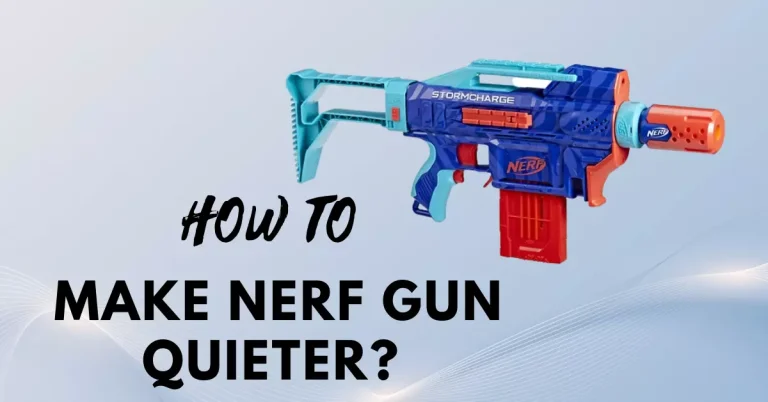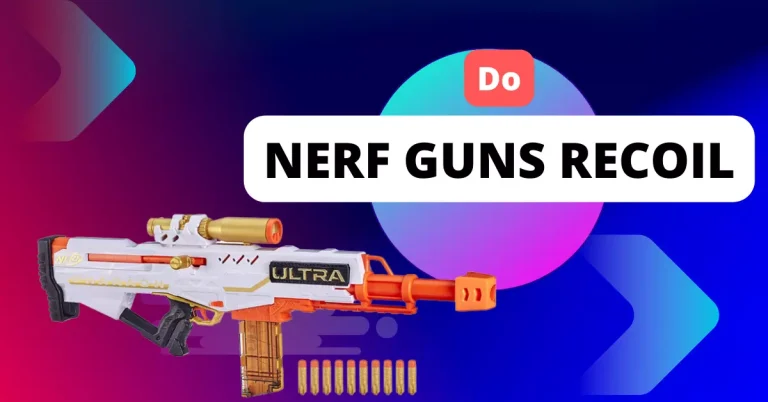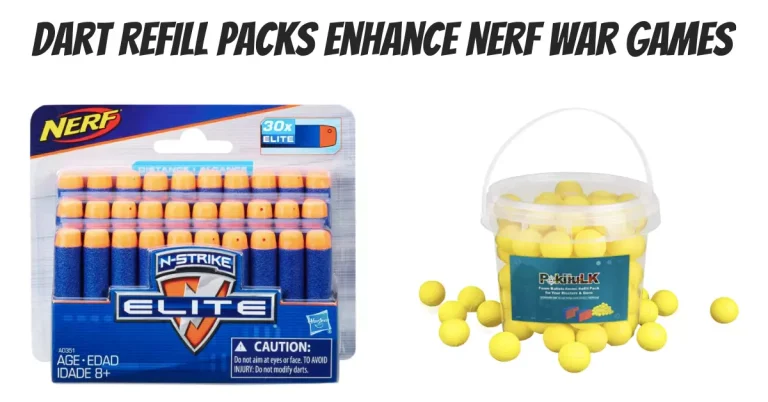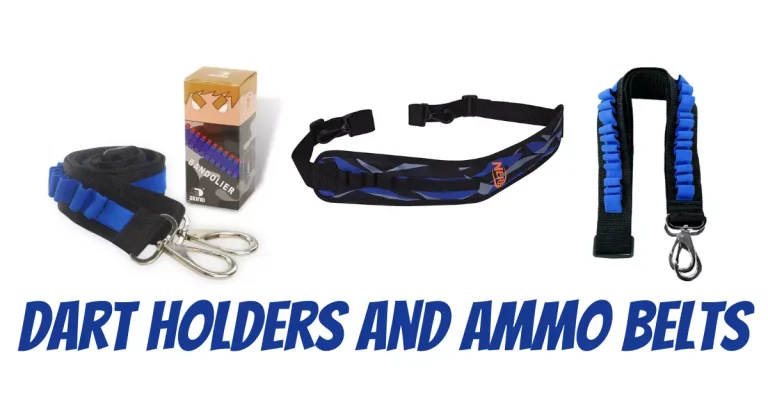How to Build a Nerf Gun Obstacle Course
To build a Nerf gun obstacle course, you can follow these general steps based on the search results:
- Gather Materials: Collect materials such as poster boards, tape, markers, scissors, hot glue gun, glue sticks, wooden dowels, paper plates, pool noodles, cardboard boxes, and other items based on the specific obstacles you want to create.
- Plan the Layout: Decide on the obstacles you want to include and plan out the layout of your course before setting up the obstacles. Consider alternating shooting obstacles with physical movement obstacles and, if the course is long, place different Nerf guns at checkpoints along the course.
- Build the Obstacles: Create a variety of obstacles such as spinning targets, barriers, tunnels, and shooting galleries using the gathered materials. Involve the kids in brainstorming and building each obstacle to make it a fun and engaging activity for them.
- Set Up the Course: Once the obstacles are built, set up the course in your backyard or a suitable space. Test the course to ensure it provides an exciting and challenging experience for the participants.
- Enjoy the Course: After the course is set up, let the kids and family members run through the course, enjoying the fun and excitement of the Nerf gun fort.
Building your own obstacle course can provide hours of fun and entertainment for both childre, adults and couples. In this article, we will guide you through the process of designing and setting up a thrilling Nerf gun course that will keep participants engaged and coming back for more.
Designing a Nerf Gun Obstacle Course
Now let’s explore the steps involved in designing a Nerf gun course that will challenge and entertain the participants.
1. Selecting a Location
Choose a suitable location for your Nerf gun course. If you have access to a spacious backyard or a local park, those can be great options. Make sure the area has enough space for participants to move around freely and set up various obstacles.
2. Creating Obstacles and Targets
To make the course more engaging, incorporate obstacles and targets. Use everyday objects like cardboard boxes, plastic crates, and inflatable structures to create barriers and hiding spots. Set up targets such as cans, balloons, or foam board cutouts for participants to aim at during the course.
To get the feeling of actual war, you can Camouflage Nerf Guns and enjoy the game.
Bunkers
Bunkers are large, sturdy structures that offer substantial cover for players during Nerf gun battles. They are typically made of foam or inflatable materials and come in various shapes and sizes. Nerf Bunkers and forts provide players with a safe spot to reload, strategize, or take shelter from incoming foam darts.
Walls and Barricades
Walls and barricades are versatile obstacles that can be easily incorporated into your Nerf gun course. They can be made using cardboard, plastic crates, or even inflatable structures. These obstacles provide players with temporary cover and create opportunities for tactical movements and ambushes.
Tunnels and Trenches
Tunnels and trenches add an exciting element of surprise and challenge to your Nerf gun course.
Players can crawl through tunnels or navigate narrow trenches to reach strategic positions or surprise their opponents.
Hurdles and Ladders
Hurdles and ladders add verticality to your Nerf gun course, creating an extra layer of challenge. Participants may need to jump over hurdles or climb ladders to access elevated positions or overcome obstacles.
These obstacles test players’ physical abilities and add a sense of adventure to the gameplay.
Targets: Aiming for Victory
Target sets are essential components of a Nerf gun obstacle course, adding focus and objectives to the gameplay. They serve as points of aim and encourage participants to showcase their accuracy and precision. Here are different types of targets you can incorporate:
Traditional Bullseye Targets
Bullseye targets are classic options that challenge participants to hit the center with their foam darts. These targets often feature concentric circles with varying point values. They can be made of foam board, cardboard, or even hanging fabric targets.
Knockdown Targets
Knockdown targets provide an interactive and rewarding experience for participants. These targets are designed to fall or flip when hit by a foam dart, creating a satisfying visual effect. They can be set up as stationary or moving targets, adding excitement and unpredictability to the gameplay.
Moving and Spinning Targets
Spinning Nerf targets introduce an element of unpredictability and challenge players’ ability to track and hit fast-moving objects. These targets can be motorized or manually controlled, simulating moving opponents or obstacles.
They require players to adapt their aim and timing, adding a dynamic and thrilling aspect to the course.
Digital Targets
Nerf digital targets provide instant feedback when hit, such as lights, sounds, or vibrations. These targets enhance the excitement of the gameplay by rewarding players for accurate shots.
Reactive targets can be customized using sensors or electronic components, creating a unique and engaging experience.
3. Setting Up Boundaries
Establish clear boundaries for the course to ensure safety and organization. Use brightly colored ropes, cones, or flags to mark the boundaries and keep participants within the designated area. Clearly communicate the boundaries to the participants before the course begins.
4. Gathering Materials and Equipment
You will need certain materials and equipment. Here are some essentials to consider:
- Nerf guns: Provide a variety of Nerf guns suitable for different age groups and skill levels.
- Foam darts: Stock up on foam darts to ensure an uninterrupted gameplay experience.
- Obstacles and targets: Collect cardboard boxes, plastic crates, inflatable structures, and other items to create obstacles and targets.
- Safety gear: Invest in eye protection goggles or glasses for all participants to ensure their safety.
Strategies for Nerf Obstacle Course Design
To make your Nerf gun course more exciting and challenging, consider implementing the following strategies during the design process.
Incorporating Challenges
Include a variety of challenges throughout the course. Create sections where participants have to navigate tight spaces, shoot at moving targets, or complete specific tasks within a time limit. These challenges will add an extra element of excitement and test participants’ skills.
Balancing Difficulty Levels
Cater to participants of different skill levels by incorporating different difficulty levels into your course.
Create beginner-friendly sections for younger or less experienced participants, and add more challenging areas for advanced players. This will ensure that everyone can enjoy the course at their own pace.
Adding Variety to the Battle Ground
To keep participants engaged, introduce variety in the course layout and gameplay. Change the arrangement of obstacles and targets periodically to provide a fresh experience each time.
Consider incorporating interactive elements like sound effects or lighting effects to enhance the overall atmosphere.
Promoting and Marketing the Course
To attract participants to your Nerf gun course, it’s crucial to promote and market it effectively. Here are some strategies to consider:
- Utilize social media platforms to create engaging content and share event details.
- Collaborate with local toy stores or community centers to spread the word.
- Encourage participants to share their experiences on social media using event-specific hashtags.
- Offer discounts or early bird registrations to incentivize early sign-ups.
FAQs

I am a Nerf gun fan, researcher and modder. I post reviews about Nerf blasters and also share tips to solve issues with your toy guns.






![How to Make a Nerf Gun Lethal? [Step by step Guide]](https://smartnerf.com/wp-content/uploads/2023/06/How-to-Make-a-Nerf-Gun-Lethal-768x402.webp)
2 Comments